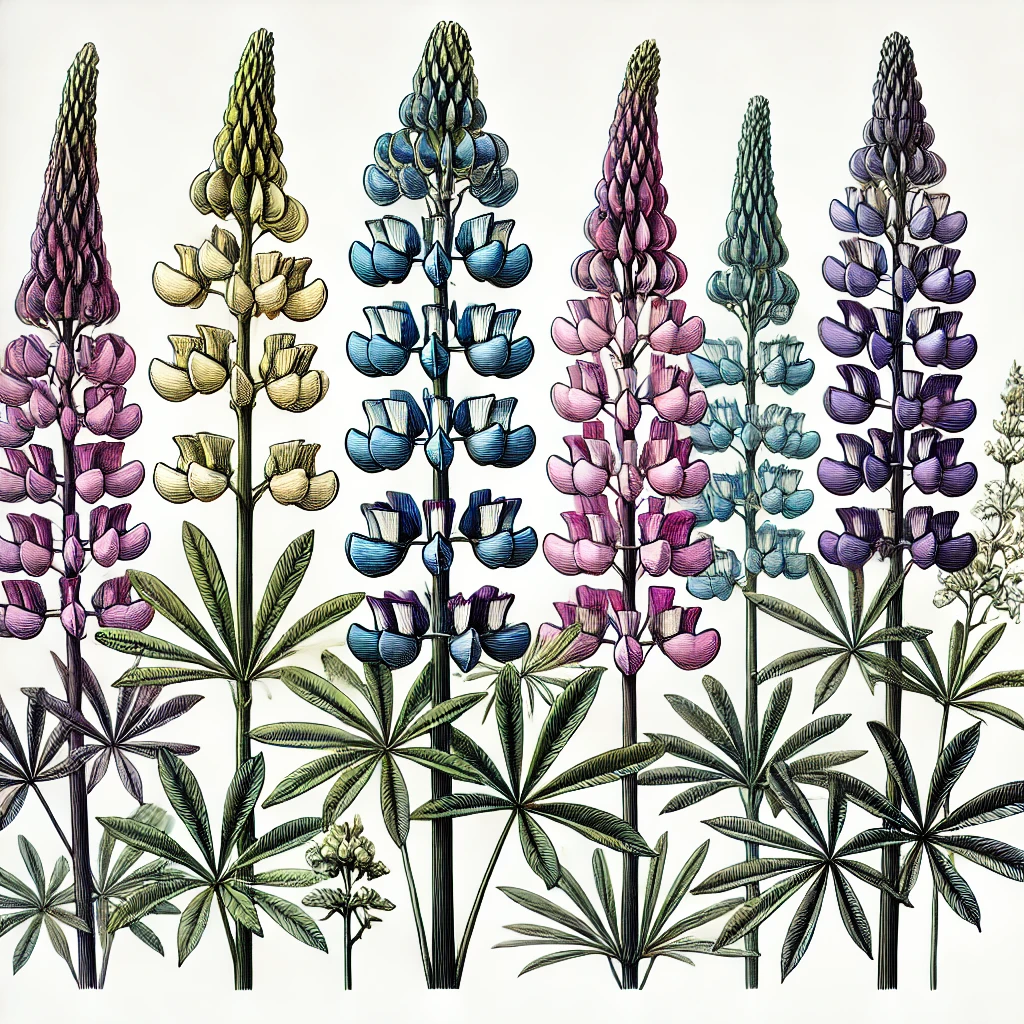Common Name: Lupine
Scientific Name: Lupinus spp.
Areas of the United States Found in Nature
Lupine is found across various regions of the United States, from coastal areas to mountain meadows. It thrives in full sun and well-drained soils, often growing in prairies, along roadsides, and in open woods. It is particularly common in the western states, including California, Oregon, and Washington, as well as parts of the Northeast.
How to Identify It
Lupine is a perennial or annual herb that can grow from 1 to 5 feet tall, depending on the species. It has palmately compound leaves with 7-11 leaflets that radiate from a central point, giving them a star-like appearance. The plant produces tall, dense spikes of pea-like flowers that come in a variety of colors, including blue, purple, pink, yellow, and white. The flowers bloom in the spring and early summer.
How and When to Harvest for the Highest Medicinal Value
Harvest Lupine flowers when they are fully open but still fresh, usually in the spring or early summer. Cut the flower spikes in the morning after the dew has dried. Lupine seeds can be harvested in late summer when the seed pods turn brown and dry out.
How to Preserve the Herb for Future Use
Lupine is generally grown for ornamental purposes and is not commonly used medicinally due to potential toxicity. However, if preserving for educational or decorative purposes:
Drying
Hang Lupine flower spikes upside down in a dark, cool, and well-ventilated area, or use a dehydrator on a low setting. Store dried flowers in airtight containers away from light and moisture.
Note: Some species of Lupine contain alkaloids that can be toxic if ingested. Exercise caution and avoid using Lupine for medicinal purposes without proper guidance.
Medicinal Uses
Lupine is not widely used in modern herbal medicine due to its potential toxicity. Historically, some species were used in traditional remedies, but these uses are not recommended without expert supervision.
Important Note: Consult with a qualified professional before considering any medicinal use of Lupine, as improper use can lead to serious health risks.
How to Propagate for Annual Use in Your Garden
Lupine can be propagated from seeds or by dividing mature plants.
From Seed
Sow Lupine seeds directly in the garden in early spring or late fall. The seeds have a hard outer coating, so soaking them overnight or scarifying (lightly scratching) them can improve germination rates. Plant the seeds about 1/4 inch deep in well-drained soil, spacing them 12-18 inches apart. Germination typically occurs within 14-30 days.
By Division
Lupine can be divided in the early spring, although this method is less common due to the plant’s deep taproot. Carefully dig up the plant and separate the clumps, ensuring each division has a section of root and some growth buds. Replant the divisions at the same depth they were growing before, spacing them about 1-2 feet apart.
How to Over-Winter the Plant
Lupine is hardy in most climates where it is grown and can survive winter with minimal care.
Cut Back
After the first frost or once the plant has finished blooming, cut the stems down to about 6 inches above the ground. This helps tidy up the garden and promotes healthy new growth in the spring.
Mulch
Apply a layer of mulch, such as straw or shredded leaves, around the base of the plant after the ground begins to freeze. This helps insulate the roots and protect them from severe cold and temperature fluctuations.
Watering
Reduce watering during the winter months, as Lupine goes dormant and does not need as much water. Ensure the soil remains well-draining to prevent root rot.
In the spring, remove any mulch and allow new growth to emerge naturally. Lupine will regrow from its roots and continue to provide its vibrant flowers and ornamental beauty in the garden.

